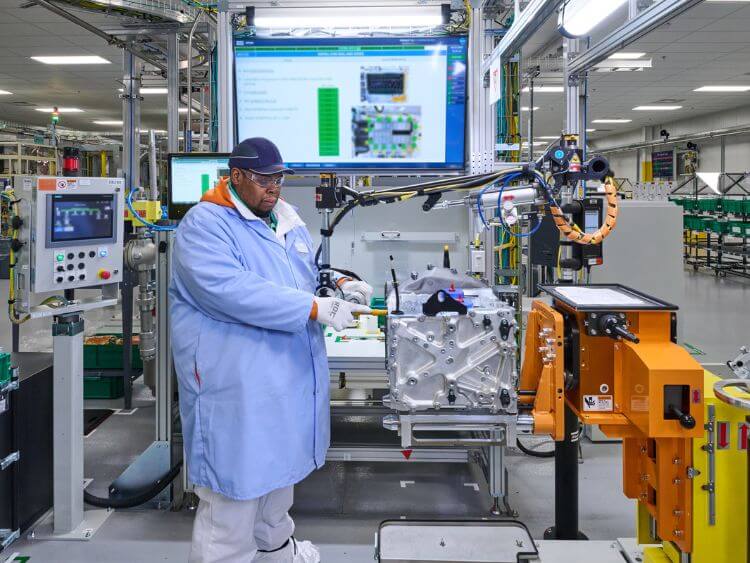GM and Honda are now making fuel cell systems together. In a day more than a decade in the making, the automakers announced the start of fuel cell system production last Thursday at their joint facility, FCSM, in Brownstown, Michigan. It's the industry's first joint venture fuel cell plant.
“This is a historic day for the industry as GM and Honda are the first full fuel cell system manufacturing joint venture to begin volume production of fuel cells for transportation and beyond,” said FCSM president Suheb Haq. “We begin the process with raw materials for membrane and electrode all the way through completed systems. Ongoing investment and commitment by both companies is driving our success at FCSM. This commitment aligns with our mission of making high quality, durable and affordable hydrogen fuel cell systems for a wide range of applications and customers.”
.jpg?width=1200&length=1200&name=toyota-gm-hydrogen-fuel-cells%20(1).jpg)



The automakers say their new co-developed fuel cell system increases performance and also double durability -- all while reducing manufacturing costs. The hydrogen power solutions built at FCSM will be used by both companies in their various product applications and business ventures.
“We integrated the strengths of Honda and GM to create the most capable production system at this joint venture,” said Tetsuo Suzuki, vice president of FCSM. “We brought a mass production mindset with attention to detail and a focus on high quality, and now we are ready to meet the needs of the customers for the future applications of fuel cell technology and the beginning of the hydrogen era.”
Honda and GM say its engineers have been working on co-developing the next-gen fuel cell system since 2013. The automakers say they also collaborated to double durability compared to the 2019 Honda Clarity Fuel Cell by using corrosion-resistant materials and by improving its operation in low-temps.
Together, the two companies say they also focused on lowering development and manufacturing costs by leveraging economies of scale, advancing the cell design, simplifying supporting auxiliary equipment, utilizing common sourcing, and reducing the use of costly precious metals. Through this collaboration, the automakers say the new fuel cell systems will be one-third less expensive to make when compared to the cost of the fuel cell system in the 2019 Honda Clarity Fuel Cell.
The automakers also say they've made significant efforts at FCSM to ensure the highest levels of quality while improving manufacturing productivity. The venture incorporates many first-of-their-kind methods for automating membrane-electrode-assembly production and fuel cell stack assembly.
Intellectual property and expertise from both automakers has been integrated at FCSM to create affordable, commercially viable hydrogen fuel cell systems to be utilized in a variety of zero-emissions propulsion and energy management applications.
GM and Honda say they share the belief that hydrogen and fuel cell technology will play an increasingly important role in meeting a wide variety of zero-emissions energy and mobility needs.
Photo: Honda/GM.
.jpg?width=1020&name=honda-gm-fuel-cell-systems%20(1).jpg)
